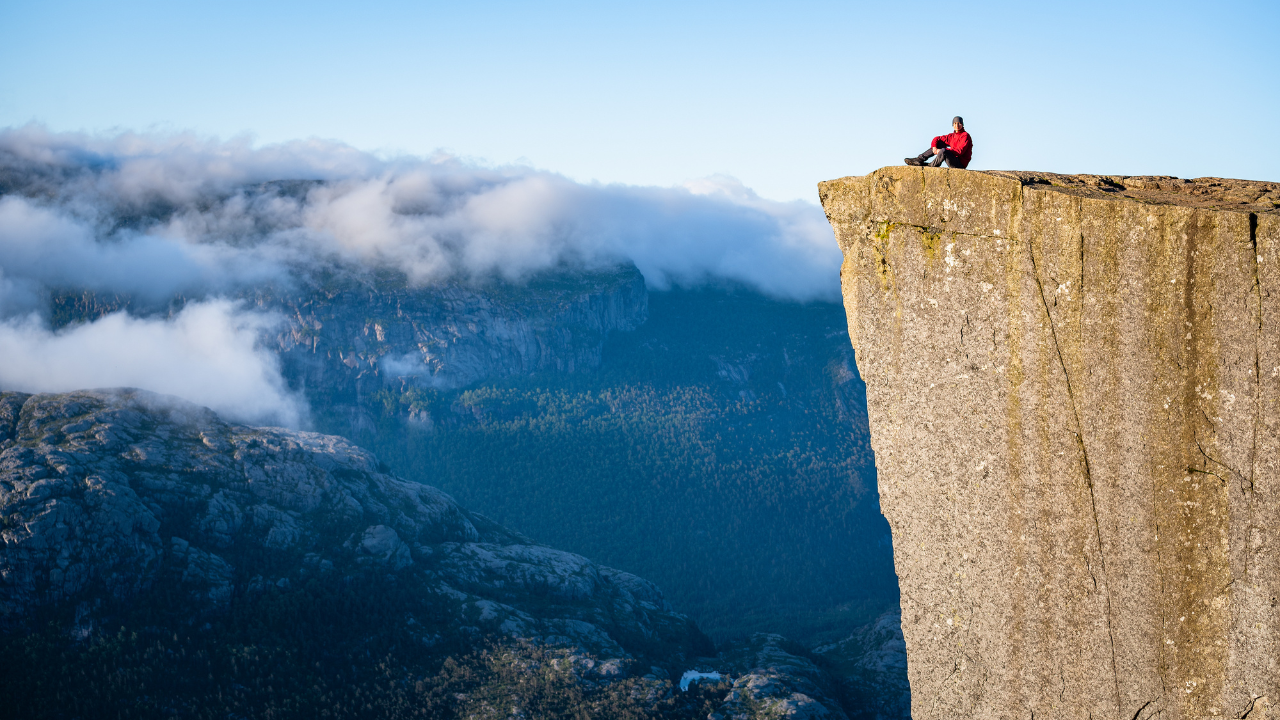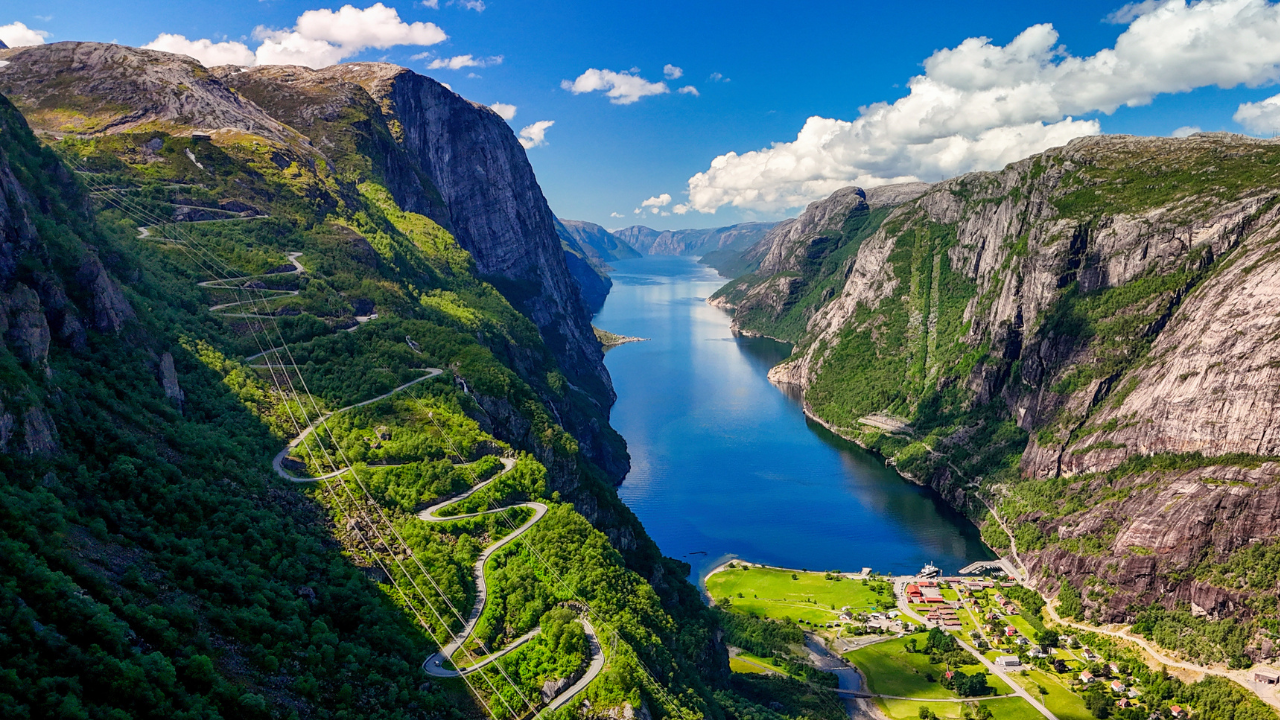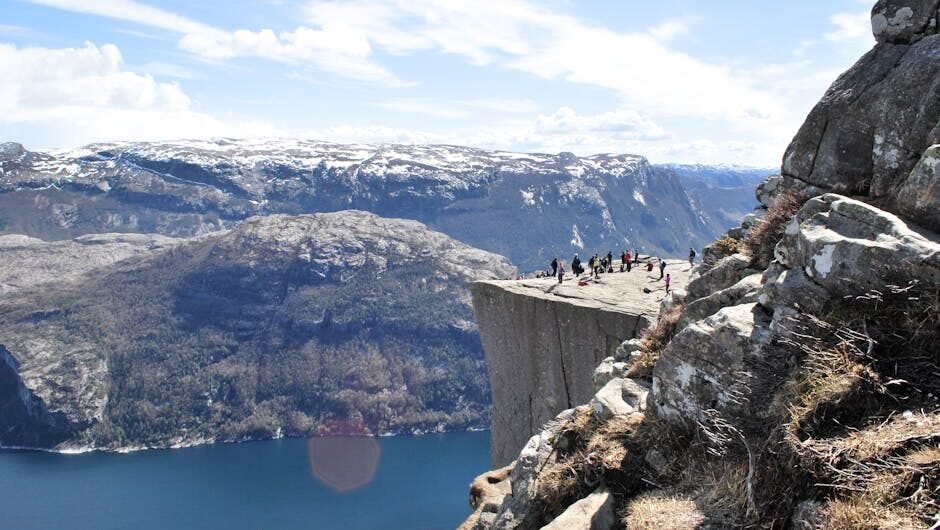Estimated reading time: 10 minutes
Key Takeaways
- The Pulpit Rock hike is a 7.6-8 km round-trip trek that takes about 4-5 hours to complete.
- The best time to hike is from May to October, with special preparation needed for off-season visits.
- From Stavanger, you can reach Pulpit Rock by bus, car (about 45 minutes), or guided tour.
- Preikestolen (Pulpit Rock) rises 604 meters above Lysefjord, offering spectacular panoramic views.
- Combining your hike with a Lysefjord cruise provides a complete Norwegian fjord experience.
Table of Contents
- Introduction
- Overview of Pulpit Rock (Preikestolen)
- Getting There: How to Get to Pulpit Rock from Stavanger
- The Pulpit Rock Norway Hike
- Exploring the Lysefjord
- Frequently Asked Questions and Additional Tips
- Conclusion
Introduction
Set against the dramatic Norwegian fjords, the Pulpit Rock Norway hike is world-famous for its stunning cliff-top views and unforgettable adventure. This complete guide gives you everything you need to plan your perfect trek, from trail details to transportation options from Stavanger. You’ll also discover ways to explore the beautiful Lysefjord waters that lie below this iconic cliff face. Whether you’re a seasoned hiker or planning your first Norwegian adventure, this guide makes reaching one of Norway’s most photographed natural landmarks simple and stress-free.
Want to see this for yourself? Click here to jump to this part of the video.
Overview of Pulpit Rock (Preikestolen)
Pulpit Rock (Preikestolen) stands as a 604-meter-high cliff overlooking the turquoise waters of Lysefjord in southwestern Norway. This flat-topped rock formation provides visitors with awe-inspiring panoramic views that stretch across one of Norway’s most beautiful fjords. On clear days, the vista seems endless, making it a top spot for photographers and nature lovers alike.
What makes this landmark special is its unique geological features. The flat plateau, roughly 25 by 25 meters in size, was formed through glacial erosion thousands of years ago. This perfectly sculpted natural platform draws more than 300,000 hikers annually who come to stand at its edge and take in the stunning fjord views.
This blog serves as your detailed preikestolen hike guide, covering everything from trail conditions to safety tips. The accessible yet exciting nature of this hike makes it suitable for many fitness levels, which partly explains why it has become one of the most popular natural attractions in all of Norway.
Getting There: How to Get to Pulpit Rock from Stavanger
Knowing how to get to Pulpit Rock from Stavanger is essential for planning your adventure. Here are your main transportation options to reach the trailhead:
Transportation Options
By Bus:
- The most straightforward option is taking a GoFjords direct bus from Stavanger to the Preikestolen trailhead.
- This route has been simplified since the opening of the Stavanger-Tau tunnel, which eliminated the need for a ferry crossing.
- Buses run regularly during high season (May-September) but have reduced schedules during off-peak months [SOURCE].
By Car:
- Driving takes approximately 40-45 minutes from Stavanger to the Preikestolen parking area.
- The route is well-marked and scenic, with parking costing around 250 NOK per day.
- Arrive early during peak season to secure a parking spot as the lot fills quickly [SOURCE].
By Guided Tour:
- Many companies offer guided tours with transportation included from Stavanger.
- This option provides the benefit of local knowledge and removes any transportation worries.
- Tours can be booked through visitor centers or online in advance.
Travel Tips
To make your journey to the trailhead smooth and stress-free:
- Always check current transportation schedules, especially if traveling outside peak season.
- If public transport schedules don’t align with your plans, local bus no. 100 to Jørpeland followed by a pre-booked taxi-bus is a good backup option.
- During winter months (November-April), guided tours are strongly recommended due to challenging weather and trail conditions [SOURCE].
- Allow extra time for your journey, particularly during summer when tourist traffic can cause delays.
The Pulpit Rock Norway Hike

The Pulpit Rock Norway hike is the highlight of many visitors’ trips to this region. Here’s what to expect on the trail:
Trail Details
Distance and Time: The hike is approximately 7.6-8 km (4.7-5 miles) round-trip and typically takes 4-5 hours to complete, including time spent at the summit enjoying the views [SOURCE].
Difficulty: The trail is rated as moderate in difficulty. While not technically challenging, it does include some steep and rocky sections. The path is suitable for reasonably fit adults and children above 6 years of age [SOURCE].
Elevation Gain: You’ll climb approximately 350-500 meters from the trailhead to the top of Pulpit Rock.
Trail Highlights
The path to Preikestolen offers varied terrain and stunning views along the way:
- The hike begins at Preikestolen Mountain Lodge/BaseCamp with clear signage.
- Early sections take you through beautiful pine forests before emerging onto more open terrain.
- You’ll cross wooden boardwalks over marshy areas and navigate well-maintained stone steps in steeper sections.
- Helpful distance markers appear every 500 meters, letting you track your progress [SOURCE].
- Several viewpoints along the trail offer perfect spots for breaks and photos.
- The final approach to Pulpit Rock opens up to reveal breathtaking views across Lysefjord.
Packing and Safety
Proper preparation is key to enjoying your hiking experience safely:
Essential Gear:
- Sturdy hiking boots with good ankle support and grip
- Weather-appropriate clothing (layering is recommended as conditions can change)
- Waterproof jacket (even on sunny days, as weather can shift quickly)
- Water bottle (at least 1-2 liters per person)
- Snacks and lunch for energy during the hike
- Sun protection (hat, sunscreen, sunglasses)
- Basic first aid kit
- Fully charged mobile phone
Weather Considerations:
- Always check weather forecasts before starting your hike.
- Fjord weather can change rapidly – be prepared for sudden shifts in conditions.
- Fog can roll in quickly, reducing visibility at the summit.
- During winter and early spring (November-April), the trail may be covered in snow and ice, requiring crampons and hiking poles [SOURCE].
- Be flexible with your hiking plans and be ready to turn back if conditions worsen [SOURCE].
Exploring the Lysefjord

Hiking the Lysefjord area offers more than just the Pulpit Rock experience. This stunning fjord, carved by glaciers during the ice age, stretches 42 kilometers inland from the coast near Stavanger and provides numerous opportunities for exploration.
Lysefjord Cruise from Stavanger
A Lysefjord cruise from Stavanger is a perfect complement to your hiking adventure:
- Regular boat tours depart from Stavanger’s harbor, lasting 2-3 hours and showcasing the fjord’s dramatic landscape.
- From the water, you’ll gain a completely different perspective of Pulpit Rock, seeing it towering 604 meters above.
- Cruises typically pass by waterfalls, small settlements, and other natural features only visible from the water [SOURCE].
- Many operators provide informative commentary about the fjord’s geology, history, and wildlife.
Combination Travel Experiences
For a complete Norwegian fjord experience, consider these combination options:
- Hike and Cruise Packages: Several tour companies offer combined experiences where you hike to Pulpit Rock and then return to Stavanger via boat through the fjord.
- Extended Fjord Tours: Longer cruises may include stops at small villages along the Lysefjord, allowing for a deeper exploration of local culture.
- Kayaking Adventures: For the more adventurous, guided kayaking trips on the fjord provide an intimate water-level perspective.
- RIB Boat Safaris: High-speed rigid inflatable boat tours offer an exhilarating way to cover more of the fjord in less time [SOURCE].
The combination of hiking and water-based exploration gives you a complete understanding of this remarkable natural formation. Seeing Pulpit Rock from below on a cruise and then standing atop it after your hike creates a memorable, 360-degree experience of one of Norway’s most iconic landscapes.
Top Picked Activities for Pulpit Rock & Lysefjord
Frequently Asked Questions and Additional Tips
How long is the Pulpit Rock hike?
The complete round-trip hike typically takes 4-5 hours, including rest stops and time spent at the summit. The total distance is approximately 7.6-8 km (4.7-5 miles) with an elevation gain of 350-500 meters. Most hikers spend 30-60 minutes at the top to rest and take photos.
Best Times to Visit
The optimal hiking season runs from May through October, when trails are generally free of snow and ice. Here’s what to expect during different periods:
- May-June: Spring conditions with fewer crowds and blooming vegetation, but possibly some remaining snow patches.
- July-August: Peak season with the best weather but also the largest crowds; start early in the morning to avoid the busiest times.
- September-October: Beautiful fall colors and reduced crowds, with cooler temperatures.
- November-April: Winter conditions require special equipment (crampons, poles) and preferably a guide. The experience is magical but significantly more challenging [SOURCE].
General Tips for a Successful Hike
- Start early (before 8:00 AM) to avoid crowds and ensure you have plenty of daylight hours, especially outside of summer.
- Pack more water and snacks than you think you’ll need.
- Wear proper hiking footwear – sneakers are not recommended due to slippery sections.
- Consider a guided tour if you’re new to hiking or want to learn about the area’s geology and history.
- There are no barriers at the edge of Pulpit Rock – stay at least 2-3 meters from the edge if you’re uncomfortable with heights.
- Cell phone coverage is generally good along the trail, but don’t rely on it exclusively for navigation.
- Leave no trace – carry out all trash and stay on marked trails to protect the natural environment.
Resources and Links
To enhance your planning, consider these helpful resources:
- Trail maps and GPS routes are available through apps like Outdooractive and AllTrails.
- Travel itineraries can help you fit the Pulpit Rock hike into a broader Norway adventure.
- Current bus schedules can be found on the GoFjords website or at the Stavanger tourist information center.
- For guided hikes and tours, companies like Outdoorlife Norway and GoFjords offer various packages.
- Budget planning is important as Norway can be expensive – packed lunches and advance bookings help manage costs.
- Fjord tour operators can provide combined hiking and boating experiences.
Conclusion
The Pulpit Rock Norway hike stands as one of the most rewarding outdoor experiences in Scandinavia. With its manageable difficulty level, stunning views, and good trail infrastructure, it’s accessible to many types of hikers while still providing an authentic Norwegian wilderness experience.
From the practical aspects of reaching the trailhead from Stavanger to understanding what to expect on the trail itself, this guide has covered the essentials for planning your adventure. Remember that proper preparation, appropriate timing, and respect for the natural environment will make your experience both safe and memorable.
For an even richer experience, consider combining your hike with a Lysefjord cruise to gain multiple perspectives on this remarkable landscape. The contrast between looking up at the towering cliff from the water and then standing at its edge provides a complete appreciation of Pulpit Rock’s dramatic setting.
Whether you’re visiting Norway specifically to hike this famous landmark or including it as part of a broader Norwegian hiking adventure, Pulpit Rock promises memories and photographs that will last a lifetime.
Share your experiences in the comments below, or reach out with any questions about planning your own Pulpit Rock hike. For more stunning travel documentaries and guides exploring Norway and other destinations, visit Pathfinders Travel on YouTube for high-quality 4K videos of the world’s most beautiful places.

